Introduction to User-Friendly Website Design and Its Importance
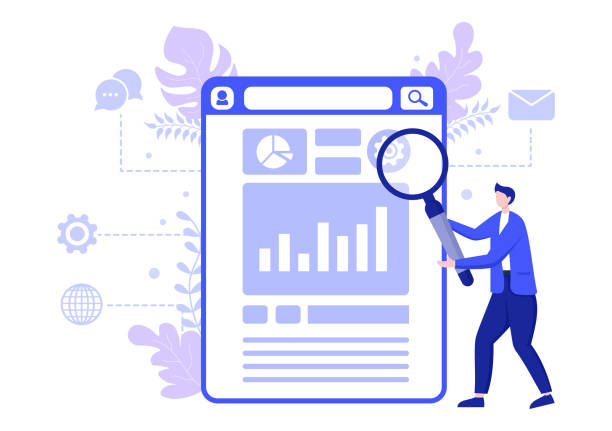
In today’s digital world, having a website is just the first step; the more crucial step is ensuring that your website has a user-friendly website design.
This concept goes beyond the mere aesthetics of a site, encompassing ease of use, accessibility, and creating a positive experience for visitors.
A user-friendly website is one that understands users’ needs and addresses them quickly and simply.
The importance of this lies in the fact that if users cannot easily find the information they need or interact with the site, they will quickly leave it and go to your competitors.
This is an important #educational aspect for any business that wants to succeed in the online space.
A user-friendly website design not only leads to increased customer satisfaction but also has a direct impact on improving the site’s ranking in search engines (SEO) and increasing conversion rates.
Suppose you have an excellent product, but the purchasing process on your website is complicated; in that case, the probability of losing customers is very high.
Therefore, investing in #website_design #user-friendly means investing in the long-term success of your business.
This includes attention to #loading_speed, #simple_navigation, and #relevant_content.
When a user feels that the site is designed for them, the likelihood of their return increases, and this positive cycle continues.
Creating an optimal #user_experience is the main goal of every professional website designer.
Are your online sales not as expected? With Rasawweb, solve the problem of low sales and poor user experience forever!
✅ Increase visitor-to-customer conversion rates
✅ Create an enjoyable user experience and boost customer trust
⚡ Act now for a free consultation!
The Role of User Experience (UX) in Website Design
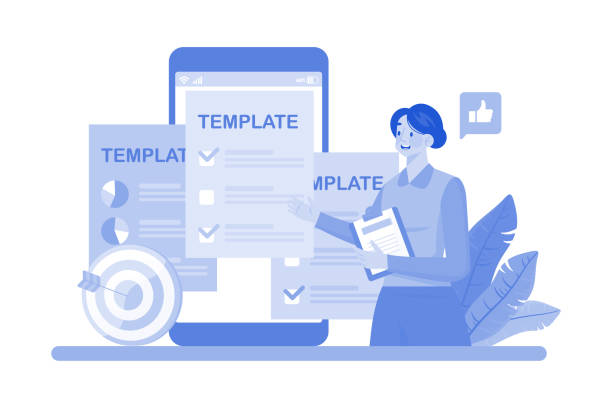
User Experience or UX is the backbone of a user-friendly website design.
UX refers to the user’s overall feeling when interacting with a website; from the moment they enter the site until they leave.
This includes ease of use, efficiency, enjoyability, and accessibility.
An excellent user experience ensures that the user achieves their goal without any problems and feels satisfied in the process.
To achieve this, UX design teams conduct extensive research, including user interviews, creating personas (hypothetical user characters), and mapping the customer journey.
This #specialized approach ensures that the design is based on the actual needs and behaviors of users.
The ultimate goal of UX is for the website to not only look beautiful but also function flawlessly and logically.
For example, if a user is looking for contact information, they should be able to find it in less than a few seconds.
If there’s a registration button, it should be clear and clickable.
The stronger a site’s UX, the more likely the user will stay on the site, explore content, and perform desired actions (such as making a purchase or signing up).
This #analytical aspect of design helps identify and address potential weaknesses in the user interaction process, which in turn helps create a truly user-friendly website.
In fact, a user-friendly website design is almost impossible without a deep understanding of UX.
Appealing User Interface (UI) and How to Implement It
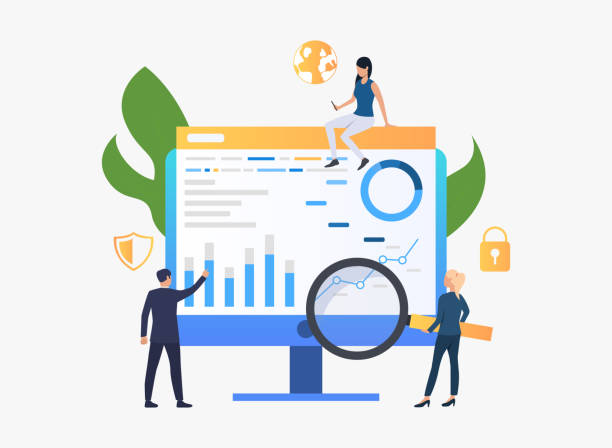
While User Experience (UX) addresses the user’s overall feeling, User Interface (UI) relates to the visual and interactive aspects of a website.
UI includes everything the user sees and interacts with: buttons, icons, images, colors, typography, spaces, and forms.
An appealing and efficient UI plays a vital role in creating a user-friendly website design.
It not only makes the site visually pleasing but also makes navigation intuitive and easy.
To implement a successful UI, designers must understand principles of visual design, color theory, font psychology, and Gestalt laws.
This is a #guidance section for any team looking to improve the look and feel of their site.
Choosing the right color palette can have a significant psychological impact on the user and evoke specific emotions.
Similarly, using readable typography and appropriate visual hierarchy helps the user process information easily.
The goal is for all UI elements to work in perfect harmony to provide a unified and enjoyable experience.
For example, Call to Action (CTA) buttons should be prominent and recognizable.
Expertise in UI design means the ability to combine aesthetics with functionality.
Below is a table of key UI elements that can be useful in implementing a successful user interface:
| UI Element | Importance in Usability | Implementation Tips |
|---|---|---|
| Color Palette | Creating appropriate mood, branding, readability | Use 2-3 main colors, suitable contrast for text |
| Typography | Readability and text clarity, information hierarchy | Choose readable fonts, use different sizes and weights |
| Buttons and Call to Action (CTA) | Guiding user towards goal, increasing conversion rates | Prominent and recognizable, clear text, logical placement |
| Icons | Quick visual communication, reducing need for text | Simple, understandable, consistent with overall style |
Loading Speed and Website Performance Optimization
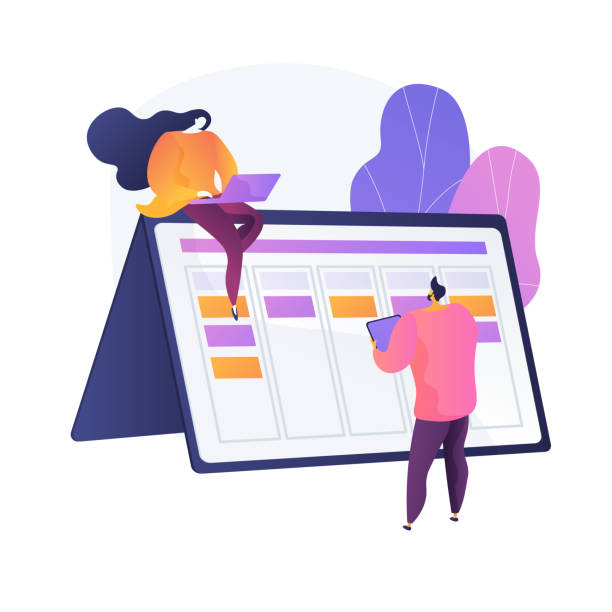
A website’s loading speed not only affects SEO but is also a critical factor in creating a user-friendly website design.
Today’s users are impatient and expect sites to load in a fraction of a second.
Studies have shown that even a one-second delay in page loading can lead to a significant decrease in conversion rates and an increase in bounce rate.
Search engines like Google also view site speed as an important ranking factor, as it directly impacts user experience.
Therefore, website speed optimization is a #specialized and essential aspect of web design.
There are various techniques to improve loading speed.
One of the most important is image optimization.
Large images can significantly slow down a site, so compressing them without losing quality is highly important.
Using a CDN (Content Delivery Network) to deliver content from the nearest server to the user can dramatically reduce loading times.
Caching also allows the user’s browser to store static site files for faster loading on subsequent visits.
These are just a few #guidance techniques that help webmasters improve their site’s performance and ensure a user-friendly website design.
Regularly checking site speed with tools like Google PageSpeed Insights and GTmetrix is essential to identify and address weaknesses.
These measures not only improve user experience but also help keep users on the site longer and reduce their frustration.
Does your company’s website perform as well as your brand deserves? In today’s competitive world, your website is your most important online tool. Rasawweb, a specialist in professional corporate website design, helps you to:
✅ Attract customer credibility and trust
✅ Convert website visitors into customers
⚡ Get a free consultation!
Responsiveness and Design for Various Devices

In the current era, where users connect to the internet through various devices including smartphones, tablets, laptops, and even smart TVs, Responsive Design is vital for a user-friendly website design.
Responsive design means that your website should automatically adapt its layout and elements to the user’s screen size, without the need for zooming or horizontal scrolling.
This feature provides a seamless and optimized user experience on any device and is of high importance, especially given that a significant portion of internet traffic today comes from mobile devices.
This approach is an important #educational aspect for every web designer.
To implement responsive design, techniques such as using relative units (like percentages or em) instead of absolute units (like pixels) for element sizing, flexible images that resize with the screen, and most importantly, Media Queries in CSS are used.
Media Queries allow designers to apply different styles based on device characteristics (such as screen width or orientation).
A website without responsive design will appear unusable on mobile devices and quickly frustrate users.
This aspect of user-friendly website design not only helps improve user experience but is also highly recommended by search engines and impacts site rankings.
Ensuring that your website displays correctly on all devices demonstrates your professionalism and customer-centricity.
Content Structure and Easy Navigation
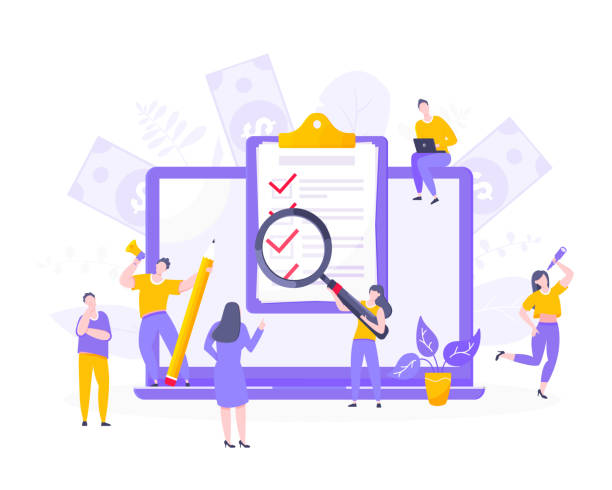
One of the most important factors in creating a user-friendly website design is the logical organization of content and providing easy and intuitive Navigation.
When a user enters a website, they should be able to quickly access the information they need without confusion.
This requires a strong Information Architecture that organizes content hierarchically and comprehensibly.
Navigation menus should be clear, concise, and predictable.
Avoid confusing terminology and try to create a logical structure for content categorization that mirrors how users think.
This is a #guidance approach for any website seeking greater efficiency.
Using breadcrumbs can help users understand their position on the site and easily return to previous pages.
Additionally, an efficient search field is essential for sites with a large volume of content.
The simpler your site’s navigation, the less time users spend finding what they want and the more time they dedicate to consuming content or performing desired actions.
This not only increases user satisfaction but also helps reduce bounce rates and increase engagement.
A customer-centric website design always emphasizes clear and unambiguous navigation.
Providing multiple paths to access content (such as menus, search, and internal links within the text) can significantly improve the user experience and ensure that the user never gets lost on your site.
The Importance of User Testing and Feedback in Site Improvement

A user-friendly website design is never a static process, but rather a continuous cycle of improvement.
One of the most vital steps in this cycle is gathering feedback from real users and conducting regular tests.
Usability Testing allows you to see how users interact with your site, what problems they encounter, and what areas need improvement.
These tests can be conducted in a controlled lab environment or naturally in users’ environments.
Observing real user reactions and behaviors provides valuable insights that no assumptions can replace.
This is an #analytical and #educational section for designers.
In addition to usability testing, A/B Testing is also a powerful method for comparing two versions of a page or element to determine which performs better.
For example, you can test two versions of a Call to Action button with different colors or text to see which one has a higher click-through rate.
Collecting user feedback through surveys, feedback forms, online chat, and Google Analytics data analysis is also crucial.
This comprehensive approach helps you identify problems and find solutions to improve the user experience.
Ultimately, this feedback and iteration process allows you to continuously steer your website design towards truly being user-friendly.
Below is a comparative table of testing and feedback methods:
| Test/Feedback Method | Description | Advantages | Disadvantages |
|---|---|---|---|
| Usability Test | Observing real users interacting with the site | Identifying navigation and user flow issues, deep insights | Time-consuming, requires detailed planning, potential cost |
| A/B Test | Comparing two versions of an element to determine better performance | Conversion rate optimization, data-driven decision-making | Requires high traffic volume, tests only one variable |
| Surveys and Feedback Forms | Gathering direct feedback from users | Quick collection of large amounts of data, inexpensive | Responses may be subjective or inaccurate |
| Web Data Analysis (Analytics) | Examining user behavior statistics (bounce rate, time on site) | Objective and quantitative data, pattern identification | Are indicators of problems, not their root cause |
Quality Content and Its Impact on Usability

Content is king; this statement not only applies to SEO but also plays a pivotal role in creating a user-friendly website design.
Even the best UI and UX design cannot compensate for poor content.
Quality content means content that is relevant, accurate, reliable, and easily understandable.
This content should answer users’ questions, provide useful information, and guide them toward their goals on the site.
Engaging content can include in-depth articles, case studies, or even videos that spark user curiosity and encourage further exploration.
This is an #explanatory and #thought-provoking content aspect for users.
In addition to text content, the use of images, infographics, and videos significantly enhances appeal and readability.
Visual content can present complex information in a simple and digestible way.
Structuring content with headings, subheadings, lists, and short paragraphs improves readability and allows users to quickly scan for the information they need.
A website with an excellent user experience always presents its content in a way that is both engaging for human readers and optimized for search engines.
Inappropriate, outdated, or misleading content can quickly erode user trust and drive them away from your site.
Therefore, investing in the continuous production and updating of quality content is the cornerstone of a user-friendly website design.
Are your online sales not as expected? With Rasawweb, solve the problem of low sales and poor user experience forever!
✅ Increase visitor-to-customer conversion rates
✅ Create an enjoyable user experience and boost customer trust
⚡ Act now for a free consultation!
Security and User Trust in Website Design

Website security is more important today than ever before and is an integral part of a user-friendly website design.
Users need complete trust in a website to share personal information or conduct financial transactions.
Lack of security can lead to data loss, hacking, and ultimately, loss of business credibility.
Using an SSL/TLS certificate (indicated by https:// in the site address) is a crucial first step for encrypting communications between the user’s browser and the website server.
This not only builds user trust but is also considered a positive ranking factor by search engines.
This is a #specialized and #news aspect that is always at the forefront of security news.
In addition to SSL, implementing strong data privacy policies, such as GDPR or local regulations, and transparency in how user information is collected and used, is essential.
Having a clear privacy policy and terms and conditions assures users that their data is kept confidential and secure.
For e-commerce sites, payment gateway security and ensuring that transactions are conducted in a secure environment are crucial.
Trust signals, such as logos of reputable security companies or testimonials from satisfied customers, can help strengthen the sense of trust.
Ultimately, a user-friendly website design is not just limited to appearance and functionality, but also includes creating a secure and reliable online environment for users.
Neglecting this issue can lead to irreversible consequences for the business and its users.
The Future of User-Friendly Website Design and Emerging Trends
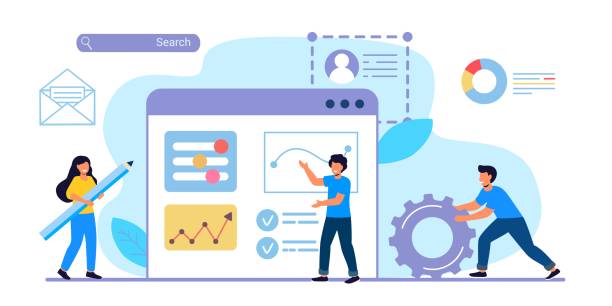
The world of web design is constantly evolving, and what is considered a user-friendly website design today might become obsolete in the near future.
Anticipating emerging trends and adapting to them is crucial for maintaining a competitive edge.
One of the most important emerging trends is Artificial Intelligence (AI) in web design.
AI-powered tools can automate the design process, offer suggestions for UX/UI improvements, and even automatically create websites based on user data.
This holds great potential for increasing speed and efficiency in design.
Other trends include Voice User Interfaces (Voice UI) and Augmented/Virtual Reality (AR/VR) on the web.
With the proliferation of voice assistants like Siri and Alexa, optimizing websites for voice search and creating voice interactions becomes a necessity.
Augmented and virtual reality can also offer entirely new and immersive user experiences, especially for industries like retail (virtual product trials) and education.
Personalization of content and user experience based on each user’s behavior and preferences will also gain increasing importance.
The goal is for every user to feel that the site is designed specifically for them.
The future of user-friendly website design will increasingly move towards more natural, personalized, and intelligent interactions.
Understanding these #news and #analytical trends helps designers and developers prepare for the future and create innovative and #entertaining digital experiences that truly attract and retain users.
Frequently Asked Questions
And other services of Rasawweb Advertising Agency in the field of advertising
- Smart Content Strategy: A combination of creativity and technology for customer acquisition using real data.
- Smart Marketing Automation: An effective tool to increase website traffic with the help of real data.
- Smart Marketing Automation: Revolutionize SEO ranking with the help of real data.
- Smart Marketing Automation: Professional optimization for customer acquisition using attractive UI design.
- Smart Social Media: Professional optimization for customer acquisition using attractive UI design.
And more than hundreds of other services in internet advertising, advertising consultation, and organizational solutions
Internet Advertising | Advertising Strategy | Advertorial
Sources
What is User-Friendly Website Design?
10 Tips for Attracting Audience to Your Website
The Most Important Principles of User Experience in Web Design
How to Increase Website Audience with SEO?
“`html
? Transform your business in the online world with Rasawweb Afarin Digital Marketing Agency; from fast website design to comprehensive SEO strategies.
“`
📍 Tehran, Mirdamad Street, next to Bank Markazi, Southern Kazerun Alley, Ramin Alley No. 6
